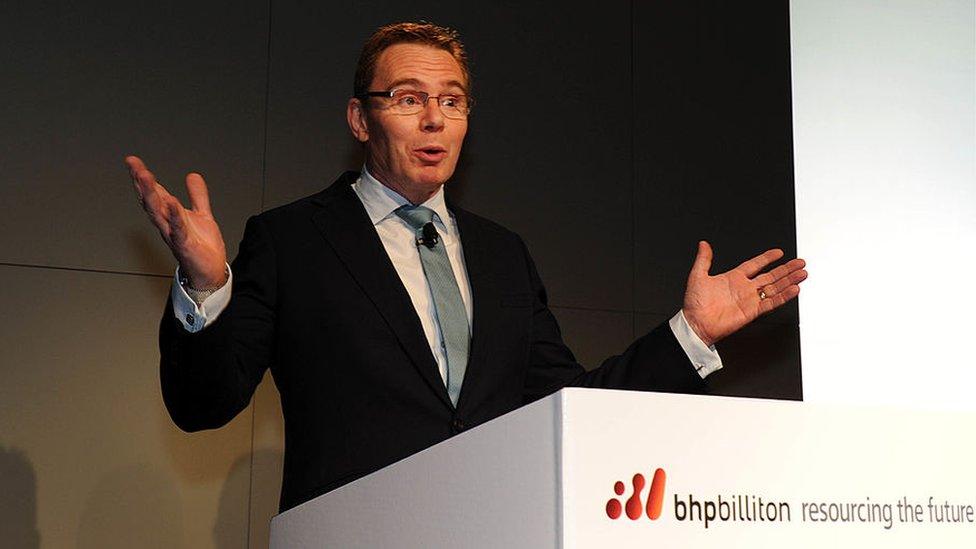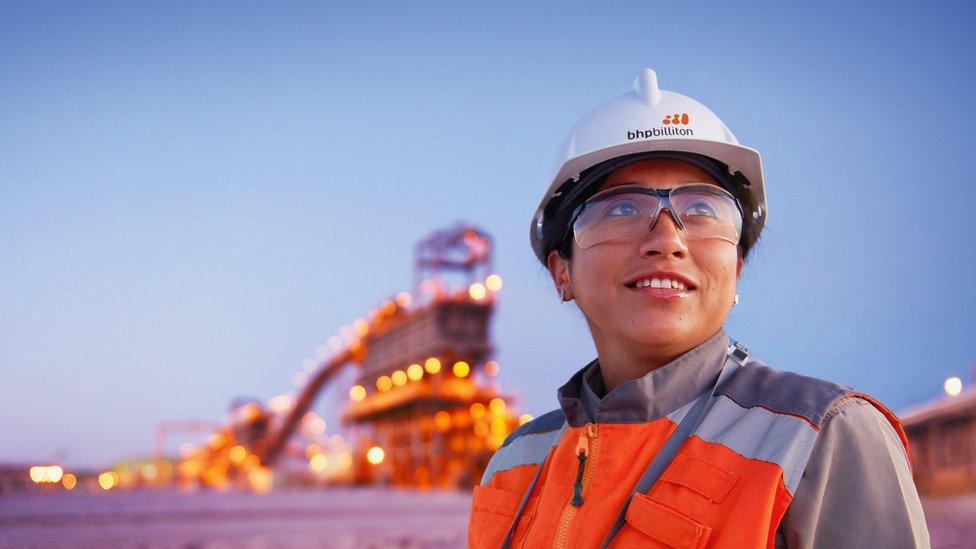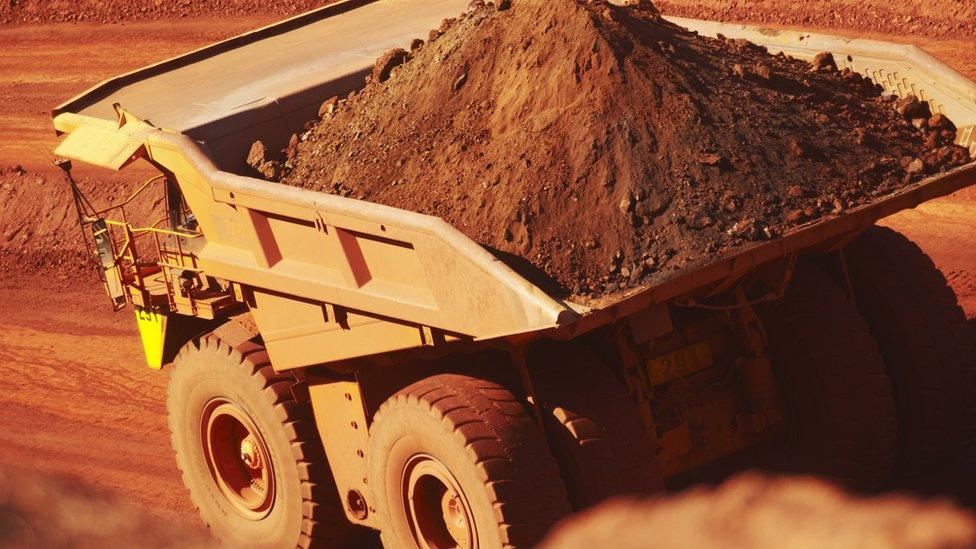BHP Billiton seeks gender equality by 2025
- Published

Getting to 50% is an 'aspirational goal', says Mr Mackenzie
The chief executive of mining giant BHP Billiton says his firm aims to have 50% female employees by 2025.
It is a steep climb from the current 17% and Andrew Mackenzie described it as an "aspirational goal".
The Anglo-Australian mining company is holding its annual general meeting in London, almost a year on from the fatal Samarco dam collapse in Brazil.
Protest groups have been calling on BHP to do more to make up for the damage.
Nineteen people were killed and hundreds were left homeless last November when the Fundao dam, owned by Samarco - a joint venture between BHP and the Brazilian firm Vale - collapsed.
The dam burst released billions of gallons of sludge, causing significant environmental damage.

Protesters want BHP Billiton to do more to make up for damage caused by the mine collapse
The protesters want BHP to expand its compensation scheme and to cancel its plans to build another dam in the area.
Gender balance
When it comes to chief executive Andrew Mackenzie's aim of have a 50-50 balance between men and women, he says there is not just a moral imperative to change, but a commercial one as well.
"We will harness the enormous potential that a more inclusive and diverse workplace can deliver," he says.
BHP argues that the commercial case for action is compelling: more inclusive and diverse workplaces perform better and have a better safety record.
However, mining has one of the lowest percentages of women in its workforce when compared to other sectors.

Very few of BHP Billiton's workers are currently women
Currently, only 17% of those at BHP Billiton are women, which is in line with the industry average for mining firms, explains Jackie Woods of Australia's Workplace Gender Equality Agency.
"In the end, though, even an aspirational target is still a terrific thing," she says.
"It is a public show of support and intention to improve gender equality."
Stumbling blocks
BHP's Mr Mackenzie makes it clear that new initiatives will be needed to boost the numbers of women it employs.
"While we have made progress, we still aren't as inclusive or diverse as we could be," he says.
"Without new initiatives, it would take us 30 years just to get to 30% female representation."

BHP Billiton says new initiatives will be needed to boost the numbers of women it employs
In a blue-collar industry, even simple things such as shift patterns can help in breaking down barriers, says Jackie Woods.
"In many cases, women still do the caring and domestic work.
"So measures like changing shift structures from 12 hours to eight hours or introducing split shifts will make it easier for women to enter such gender-segregated industries."
The agency says companies need to take a realistic long term approach.
A first stumbling block to any rapid changes might be that there are simply not enough trained women available for the jobs on offer.
In many cases, it's an issue that in fact has to be addressed much earlier on, in schools and universities, says Ms Woods - by setting student intake targets so that more women can access training for industries traditionally dominated by men.
BHP says it has included the the goal of inclusive and diverse teams in its charter and, says Mr Mackenzie, this will now be "a key measure of performance".
- Published13 October 2016

- Published21 September 2016
- Published7 April 2016
